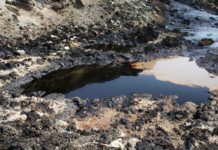
A new pair of academic books is said to provide an invaluable reference source for anyone interested in stabilisation and solidification for the remediation of soil and treatment of waste. Stabilisation/Solidification of Contaminated Soil and Waste by Colin Hills, Edward Bates, and Peter Gunning comprises two handbooks intended to provide students, practitioners, site owners, and regulators with authoritative guidance on the science underpinning this remediation technology, and how it is applied in real-world situations.
Stabilisation/Solidification (S/S) uses readily available cementitious binders to turn contaminated soil and waste into a rock-like product that reduces the risk to public health and the environment. S/S has been employed at hundreds of sites in the USA, Canada, and Europe to improve the physical and/or chemical properties of contaminated soil and waste to enable development to take place or to safely manage a source of pollution.
On the science side, the book discusses soil properties and the soil-binder system along with the scientific basis for immobilising inorganic and organic contaminants. The long-term viability of S/S treatment is discussed with reference to the maintenance of design performance and groundwater quality.
The book goes on to describe how S/S is designed and implemented, including discussions on risk reduction, the development of performance specifications, available binders, treatability studies, in-situ and ex-situ equipment/operations, quality assurance, capping, and site closure including long-term monitoring strategies. The extensive appendices include a list of over 200 completed S/S remediations and over 40 case studies.
Together the two volumes contain over 500 pages, 60 tables, 150 illustrations, and contributions from more than 20 expert practitioners in the world-wide application of S/S.







